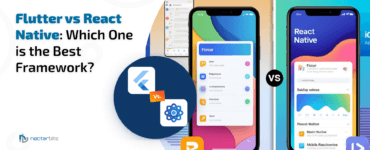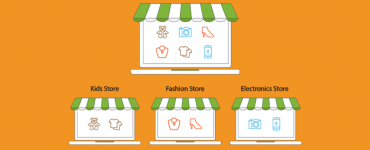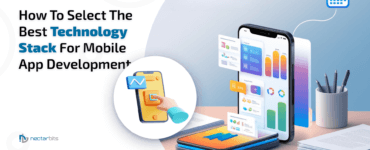Mobile Application design has many advantages, but it can be a daunting obstacle for inexperienced designers and developers. But mobile apps are better than web apps, and they can intensify brand awareness, like through in-app alerts and other mobile app integrations.
Mobile marketing strategies also help build product and brand loyalty. Mobile apps bring much more value to consumers and get your content closer to your market. It’s an outstanding platform for fostering community around your brand.
If you’re thinking about creating your mobile application but don’t have the acuity for it, this article goes through nine ways in designing mobile apps like an expert.
9 Steps in Mobile App Design
1. Set Your Vision For Your Mobile Application
Having a clear vision for your mobile app is a prerequisite in mobile app design. To express your idea, you will have to translate it into words. When you cannot put your thoughts into sentences, your mobile app design will not be as efficient because of a lack of direction.
Express a brief but captivating story or visual representation of your vision while designing your mobile application and its wireframe. A clear vision also helps you build an intuitive and user-centric app, and at the same time, hitting targets you set for your brand via your mobile app.
Determining whether your mobile app is free-to-use or a premium application is also crucial. You need to decide on this at the onset, so you can build your mobile marketing strategy that aligns with your goals.

2. Conduct Market Research
This step is also done ahead of time to determine the number of competitions in the market. Knowing your competitors can give you insights valuable to building your app. Check what’s trending, what’s not working amongst your competitors. Moreover, determine what needs are yet to be fulfilled in your niche that you can provide for your market.
To assess what the target customers’ desires are, conduct market research. It would also determine who the app is intended for, the anticipated issues and problems, and, most importantly, the needs for which your mobile app is a solution.
Create your mobile app to meet demand because that is what provides the most value to your customers.
3. Build the Graphic Design for Your Mobile Application
Since you will be using original creative content in developing your mobile app, you may need to outsource a designer for this process. You can assign various elements to your mobile app.
However, if you cannot hire an expert designer, you can try building the interface yourself. You can use the design tools available to create the design elements yourself. Just be mindful of copyright restrictions, and make sure you are producing original designs.
4. Create App Storyboards or Wireframes
The wireframes of your mobile app are the main pages that users can see as they browse your app. It serves as the foundation for the final product’s growth. You will need to imagine what each wireframe will have and how it will appear. Write your storylines and create visualizations via storyboards.
5. Develop a Landing Page for Your Mobile Application
You will need a platform to display your mobile app and present the initial design of the mobile app while developing it. It creates initial promotion for your mobile app before the launch.
It’s still a great place to meet new consumers or followers and strike up a discussion. It is, however, optional since most developers want to sell their applications on their Mobile App page. However, a landing page should be considered when you plan your mobile app.
6. Do Quality Check on Your Mobile App’s Backend
We must now add features to the wireframes you have developed. If you are reading this, then there is a high probability that you have little training in delineating your servers, APIs, and data diagrams.
You may use tools that are available to help you. Some tools can even do it for you. You’d also need a way to gather data on app use in addition to the tool. Just ensure that you use secure and reliable cloud-based storage solutions to preserve the integrity of your data.
Remember to point out on your wireframes the changes you have made so that anyone helping you on the project will see the changes.
7. Develop Your Mobile App Solution
Enlist the help of skilled designers and developers for this next step. They can put your concepts and wireframes to life. Keep a close eye on the creation and design of your mobile app to ensure that it stays true to your vision, concept, and design.
When the build is taking place, you can use models and plugins for your mobile app. The same idea applies to the creation and design of your mobile app as it does to the development and design of your website.
8. Test Your Mobile App’s Prototype
It’s time to give your mobile app’s prototype some feedback. At this stage, you’ll need people to test the model and provide honest feedback on the design of your mobile app. When making observations and recommendations, keep the interests of the consumers in mind and pursue their line of thinking.
We seek to make sure the essential functions are operational before incorporating additional designs. Test the app’s navigation and usability and how various users will use it. Review the needed changes and apply necessary edits.
9. Launch Your Mobile App in the App Store.
To get your mobile app on the AppStore, you’ll need to do the following:
- Sign up with an Apple Developer Account (which costs about $99 a year).
- App Store Connect will help you create metadata and a title for your app.
- Using XCode, upload the most recent update or build of your mobile app to the AppStore.
- Examine the App Sttore Review Policies.
- Be ready for an Apple review.
- If you’ve received certification, you should publish your mobile app.
With Google Apps, use Google’s app development kit or Android App Bundle. It is easy, and you will need to see this for the rest of the process.
- Launch the Play Console.
- Choose All apps > Create app.
- Choose the default language, then input the title for your app. Type the app’s name exactly as you expect it to appear on Google Play. You can edit this again if you like.
- Indicate whether your app is an app or a game. It can be changed later.
- Indicate whether the software is free or charged.
- Add an email address where Play Store users can ask you about this app.
- Fill out the declarations for “Content guidelines” and “US export laws.”
- Choose Create App.
Conclusion: Creating a Mobile App is Rewarding

A strong feeling of accomplishment can be felt when you design your mobile app from scratch. The passion grows as you realize that the mobile app can have a widespread and global impact. It’s also rewarding when you know people will enjoy the work you have put into it.
However, once the mobile app is released and available for download, the ratings and comments will start to pour in. It’s now time to begin working again.
Your implementation plans will start slowly, as the varied community and numerous demands mean you’ll have to take it on a case-by-case basis.
Your mobile app design will influence the target market for which it is created. So you will need to regularly enhancements your mobile app for more meaningful consumer experiences.

FAQs (Frequently Asked Questions)
The cost of developing a mobile app for a startup can range from $15,000 to $75,000. The exact cost depends on factors such as app complexity, feature set, platform choice, and the development approach.
Key factors influencing app development costs include the app’s complexity, the number and type of features, the design and user experience, the platform (iOS, Android, or both), and whether the development is done in-house or outsourced.
Is it cheaper to develop a cross-platform app for startups?
Yes, developing a cross-platform app using frameworks like React Native or Flutter can be more cost-effective for startups. These frameworks allow you to use a single codebase for both iOS and Android, reducing development time and costs.
How to reduce mobile app development costs?
Startups can reduce costs by focusing on core features, developing a Minimum Viable Product (MVP) first, leveraging cross-platform frameworks, outsourcing development, and utilizing open-source tools and frameworks.
What is cost of maintenance of a mobile app?
Ongoing costs include regular updates, bug fixes, server hosting, and code modifications to ensure optimal performance and security. Additionally, startups should budget for marketing and promotional activities to ensure the app reaches its target audience.








